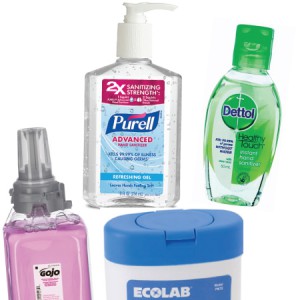In the presence of many infectious diseases, consumers understand the important role hand hygiene plays in maintaining good health. The public has become more aware about frequent hand washing as a tool to avoid viruses and the spread of germs, which has resulted in an increased frequency of handwashing. Sales of professional-use hand care products surpass other professional cleaning chemicals, growing at 3.6% in 2015 to nearly $1.5 billion at the end-user level.
The two leading categories—liquid hand soaps and foam hand soaps—collectively represent approximately 60% of the hand care market in 2015. Hygiene experts prefer these product formats over bar soaps as they help to limit the spread of germs from one person to another. Foam hand soaps represent the fastest-growing product type due to their popularity among consumers for being easy to lather and the moisturizing effects. Instant hand sanitizers continue to gain market share, experiencing a healthy growth rate of more than 5% due to the convenience they offer consumers in maintaining hand hygiene in the absence of soap and water while on-the-go. Instant hand sanitizers were once synonymous with alcohol, as it was the main ingredient in the formulation. However, many companies have begun manufacturing alcohol-free sanitizers with antimicrobials that provide long-lasting protection without causing dryness to the hands. Bar soaps are losing market share due to the growing popularity of other products forms, such as liquid and foam hand soaps and instant hand sanitizers. However, demand exists for premium-priced bar soaps for use at lodging establishments, where they remain the primary form soap.
Industrial and institutional hand wipes represent about 10% of the industrial and institutional hand care market in 2015. Growing awareness among consumers about the need to maintain high standards of hygiene has driven the growth of hand cleaning and hand sanitizer wipes in industrial and institutional facilities. The two leading end-use segments, schools/universities and industrial facilities and office buildings, collectively account for 51.5% of industrial and institutional wipes sales.
Hospitals represent the largest end-use segment of hand care products—and are the fastest-growing segment—as the need to limit health care-associated infections in hospitals, nursing homes, and assisted living facilities increases. Other end-use segments that are poised for the highest rates of growth of hand care products include building service contractors, retailers, and recreational facilities.
Hand care products are important growth drivers across the janitorial, food service, and cleaning wipes segments of the industrial and institutional market. For more information about the many facets of this market, you may refer to Kline & Company’s Industrial and Institutional Hand Care: U.S. Market Analysis and Opportunities.

